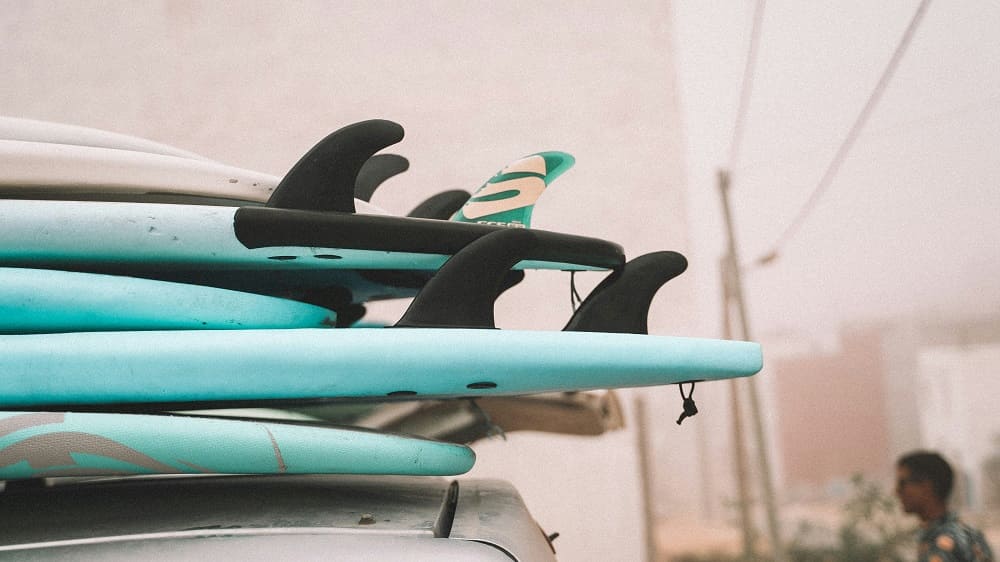Surfing, an exhilarating sport that combines athleticism with an intimate connection to the sea, relies on various factors to achieve optimal performance. Among these crucial elements are surfboard fins, often hailed as the unsung heroes of the surfing world. These small, yet mighty components play a pivotal role in enhancing maneuverability, stability, and overall riding experience on the waves.
Types of Surfboard Fins
Surfboard fins come in various shapes and configurations, each designed to cater to different styles of surfing and wave conditions. The most common types include single fins, twin fins, thrusters (tri-fin setups), quad fins, and versatile five-fin setups. Single fins offer a classic feel and smooth, flowing rides, while twin fins provide speed and agility. Thrusters, comprising three fins, strike a balance between speed and control, making them the go-to choice for many surfers. Quad fins excel in generating speed and maintaining traction, particularly in smaller, mushier waves, while five-fin setups offer versatility by allowing surfers to experiment with different fin configurations for optimal performance.
Factors Affecting Fin Performance
Several factors influence the performance of surfboard fins, including their size, shape, material composition, and placement on the surfboard. Larger fins generally provide more stability and control, while smaller fins offer increased maneuverability and responsiveness. The shape of the fins, whether they’re foiled or flat, also affects how water flows around them, impacting speed and maneuverability. Additionally, the material composition of the fins, such as fiberglass, carbon fiber, or plastic, influences their flexibility and durability. The placement of fins on the surfboard, including toe-in and cant angle, further fine-tunes performance by adjusting turning ability and tracking.
Impact of Fin Setup on Riding Styles
The choice of fin setup significantly influences a surfer’s riding style and performance on the waves. High-performance surfers often prefer thruster setups for their versatility and responsiveness, allowing them to execute precise maneuvers with speed and control. In contrast, twin fins offer a looser, more playful feel, ideal for carving and generating speed in small to medium-sized waves. Quad fins excel in generating speed and maintaining traction, making them suitable for driving through fast, hollow waves. Surfers may also experiment with alternative fin setups, such as asymmetrical or finless boards, to explore new possibilities in wave riding and maneuverability.

Choosing the Right Fins for Your Surfboard
Selecting the right fins for your surfboard involves considering various factors, including the type of board, wave conditions, and your skill level as a surfer. Beginners may benefit from larger, more stable fins that provide enhanced control and forgiveness, whereas advanced surfers may prefer smaller, more maneuverable fins for high-performance maneuvers. Matching the fins to the specific characteristics of your surfboard, such as its shape, size, and rocker profile, is crucial for achieving optimal performance and maximizing your enjoyment in the water. Additionally, experimenting with different fin setups allows surfers to tailor their equipment to suit their individual riding preferences and evolving skill levels.
Conclusion
In conclusion, surfboard fins play a fundamental role in shaping the surfing experience, influencing performance, maneuverability, and style on the waves. By understanding the various types of fins available, the factors affecting their performance, and the impact of different fin setups on riding styles, surfers can make informed decisions when selecting fins for their boards. Whether chasing down steep barrels or carving graceful turns, the right fins can elevate your surfing to new heights, enhancing your connection to the ocean and the thrill of riding its waves.
FAQs:
Consider factors such as your surfing skill level, the type of waves you typically ride, and your preferred riding style. Experimenting with different fin setups can also help you find the perfect match for your needs.
Yes, many surfers mix and match fins to customize their setups according to specific wave conditions or desired performance characteristics. However, it’s essential to ensure compatibility between the fins and your surfboard’s fin system.
Yes, fins play a significant role in generating speed and maintaining control on the waves. Fin size, shape, and placement all influence the hydrodynamics of the board, impacting its speed potential.
Absolutely. Certain fin setups may perform better in specific wave conditions. For example, thruster setups are versatile and well-suited to a wide range of waves, while quad fins excel in generating speed in fast, hollow waves.
The lifespan of surfboard fins depends on various factors, including the material they’re made from, how frequently you surf, and the conditions you surf in. Inspect your fins regularly for signs of wear and tear, such as cracks or dings, and replace them as needed to maintain optimal performance.

Luca is a professional surfer with a passion for riding waves. He’s spent years perfecting his technique and exploring the world’s best surf spots. When he’s not out on the water, Luca enjoys sharing his surfing insights and experiences through blog.

